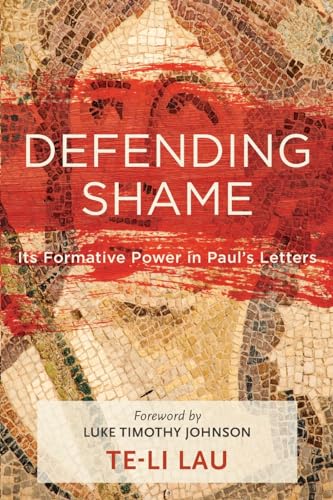Mission after Pentecost: The Witness of the Spirit from Genesis to Revelation
Written by Amos Yong Reviewed By Simon ChanThe aim of Yong’s book is quite straight-forward: to set forth a biblical theology of mission from a pneumatological perspective; more precisely, its theology of mission is based on a theological interpretation of Scripture from the perspective of the Pentecost phenomenon (pp. 12–13). From this perspective, Yong works through the entire Bible to discern the intersections between pneumatology and mission.
The work has a number of commendable features. First, the broad sweep of Yong’s pneumatological missionary vision is quite astounding for a book of this length. I find his discussion of the Old Testament particularly helpful and illuminating, such as the tension between the centrifugal and centripetal impulses in the earlier history of Israel or the tension between accepting foreigners and distancing from them. Yong does not flinch from the difficulty of addressing Israel’s ambiguous relationship to other nations: to convert but also to destroy (pp. 57–69). Translated into today’s context, how does the church maintain its international outlook in mission without dissolving its local identity? How does it preserve its local identity without falling into tribalism? How does it present the gospel to the religious “other” without questioning their religious integrity? Yong also deftly fleshes out the missionary activity of the spirit in places where we least expect it, such as Revelation and the Johannine epistles. For example, with respect to the latter, the “divine breath” helps the church to discern between true and false missionaries (pp. 262). Second, the bibliographical references are vast—typical Yong vintage! Third, questions at the end of each chapter offer readers opportunities to reflect missiologically on their own contexts. It serves as a good collateral text for a course on mission theology.
The strength of a pneumatological perspective has been demonstrated in a number of recent works by Pentecostal scholars (e.g., Frank D. Macchia, The Spirit-Baptized Church: A Dogmatic Inquiry [London: T&T Clark, 2020]). But unlike Macchia, Yong’s approach is governed less by a theological pneumatology and more by what I would call a phenomenology of “spirit” (note the lower case)—that is, the spirit as divine action, which Yong believes to be strictly “biblical” (pp. 278–79). This approach allows for an expansive view of the Spirit’s action in the world without the need to specify how Spirit’s missionary activity is affected by his personal relation to the Father and the Son and his presence in the church. It is consistent with many of his previous works where “late modernity” serves as the contextual horizon of interpretation. The underlying concern is to find common ground between church and world while recognizing that we are past the age of Enlightenment “reason” (pp. 5–6). This approach is helpful when applied to the Old Testament where “spirit” generally refers to Yahweh-in-action rather than a distinct personal agent.
When applied to the New Testament, Yong’s approach becomes problematic. Yong would have us believe that the New Testament writers had not yet understood the Spirit as a distinct person, that the Spirit’s distinct personhood is post-Nicene (pp. 18–19). In this, Yong relies, perhaps too heavily, on John R. Levison [Filled with the Spirit [Grand Rapids: Eerdmans, 2009]). But when it comes to John’s Gospel, it becomes almost impossible to force the Spirit into the Yong’s procrustean bed. He concedes to a “proto-trinitarian” theology but sidesteps its anticipation of Nicene pneumatology by regarding the Farewell Discourse as possibly a later interpolation (p. 256).
I would not say that Yong’s pneumatological missiology is seriously compromised by its pneumatological deficit, but if the New Testament does present a view of the Spirit as a distinct third person, as recent proponents of “prosopological exegesis” have argued (Matthew W. Bates, The Birth of the Trinity: Jesus, God, and Spirit in New Testament and Early Christian Interpretations of the Old Testament [Oxford: Oxford University Press, 2016]; Kyle R. Hughes, “The Spirit Speaks: Pneumatological Innovation in the Scriptural Exegesis of Justin and Tertullian,” Vigiliae Christianiae 69 [2015]: 463–83), it would have important ramifications for our understanding of the contemporary global missionary movement, which is propelled largely by global Pentecostalism.
What makes Pentecostals Pentecostal is their sense of being led by the Spirit as a speaking agent. The early Pentecostals were biblicists, who were drawn to such texts in Acts as “the Holy Ghost said, Separate me Barnabas and Saul for the work whereunto I have called them” (13:2 KJV), “Thus saith the Holy Ghost…” (21:11), etc. They grasped intuitively what prosopological exegesis seems to confirm. One cannot underestimate the powerful missionary impulse of the early Pentecostals (notwithstanding some reckless ventures) without coming to terms with their sense of the personal presence of the Spirit who speaks. The title of David du Plessis’s autobiography, taken from Acts 11:12 (KJV), epitomizes this quintessentially Pentecostal insight: The Spirit Bade Me Go (Monroe: Logos International, 1970). It is this dimension of the missionary Spirit that Yong, unfortunately, has missed by bracketing the third person of the Trinity.
Simon Chan
Simon Chan
Trinity Theological College
The Republic of Singapore
Other Articles in this Issue
The concept of personhood is crucial for our understanding of what it is to be human...
Text-Criticism and the Pulpit: Should One Preach About the Woman Caught in Adultery?
by Timothy E. MillerThis article considers whether “The Woman Caught in Adultery” (John 7:53–8:11) should be preached...
Celebration and Betrayal: Martin Luther King’s Case for Racial Justice and Our Current Dilemma
by James S. SpiegelDuring the American Civil Rights Movement, Martin Luther King’s principal arguments reasoned from theological ethics, appealing to natural law, imago Dei, and agape love...
Many churches switched to streaming or recording their services during the COVID-19 crisis...






